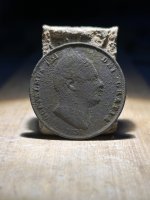Hello all, I'm a new member to the forum but a long time watcher.
So, I've finally gone off the deep end and have decided to build a dredge and seek my fame and fortune in the frozen north (sometime in the next 2 years, leasing and permits).
I have multiple questions regarding dredges and the math associated with them.
lets start simple,
equipment for pumping water
A. keene p1500 pump x2
B. Yanmar 40 hp diesel x2
When pumping 1200 to 1500 gpm of water thru 2 pumps, can the intakes be split off of each foot valve and run a double or tripple intake feed for shallower water? depth of the creek maybe a little shallow in spots and I'm hoping this is the work around for trying to suck up a heck of a lot of water without causing air cavitation in the system.
design and theoretical operation
1. how to properly size a sluice box for a dredge (yes I've read the post about sluices) however a dredge sluice runs a bit differently. So, What is the proper math to calculate size for a dredge sluice size based off of volume and flow rates assuming running at 50% pump capacity lets say a 6" intake (see below)?
2. For the suction side of life, I've been thinking about a 6" suction nozzle (just because I want to be able to suck start a 3406), 20 to 25 foot of hose then a jet log, flare, sluice. Whats the math for feeding the jet log so it doesn't loose prime?
2b. will the suction nozzle provide enough water volume to the jet log so it will not loose pressure if the nozzle is removed from the water? I'd like to hit a bank from time to time.
3. I will be scabbing on part of a hydrovac system to blast thru hard pack (2700 psi) with the various tips available dislodging material should be no issue. has anyone tried this?
4. from most of what i've read a 12% slurry rate by volume is what should be going down the box, what happens at say 15% or 20%
5. If I've completely missed the mark, please say so. At the moment I may just be completely mad as a hatter and twice as ugly.
Dream your dream and take your shot. Your death bed should only be surrounded with love and memories, NOT regret.
So, I've finally gone off the deep end and have decided to build a dredge and seek my fame and fortune in the frozen north (sometime in the next 2 years, leasing and permits).
I have multiple questions regarding dredges and the math associated with them.
lets start simple,
equipment for pumping water
A. keene p1500 pump x2
B. Yanmar 40 hp diesel x2
When pumping 1200 to 1500 gpm of water thru 2 pumps, can the intakes be split off of each foot valve and run a double or tripple intake feed for shallower water? depth of the creek maybe a little shallow in spots and I'm hoping this is the work around for trying to suck up a heck of a lot of water without causing air cavitation in the system.
design and theoretical operation
1. how to properly size a sluice box for a dredge (yes I've read the post about sluices) however a dredge sluice runs a bit differently. So, What is the proper math to calculate size for a dredge sluice size based off of volume and flow rates assuming running at 50% pump capacity lets say a 6" intake (see below)?
2. For the suction side of life, I've been thinking about a 6" suction nozzle (just because I want to be able to suck start a 3406), 20 to 25 foot of hose then a jet log, flare, sluice. Whats the math for feeding the jet log so it doesn't loose prime?
2b. will the suction nozzle provide enough water volume to the jet log so it will not loose pressure if the nozzle is removed from the water? I'd like to hit a bank from time to time.
3. I will be scabbing on part of a hydrovac system to blast thru hard pack (2700 psi) with the various tips available dislodging material should be no issue. has anyone tried this?
4. from most of what i've read a 12% slurry rate by volume is what should be going down the box, what happens at say 15% or 20%
5. If I've completely missed the mark, please say so. At the moment I may just be completely mad as a hatter and twice as ugly.

Dream your dream and take your shot. Your death bed should only be surrounded with love and memories, NOT regret.







